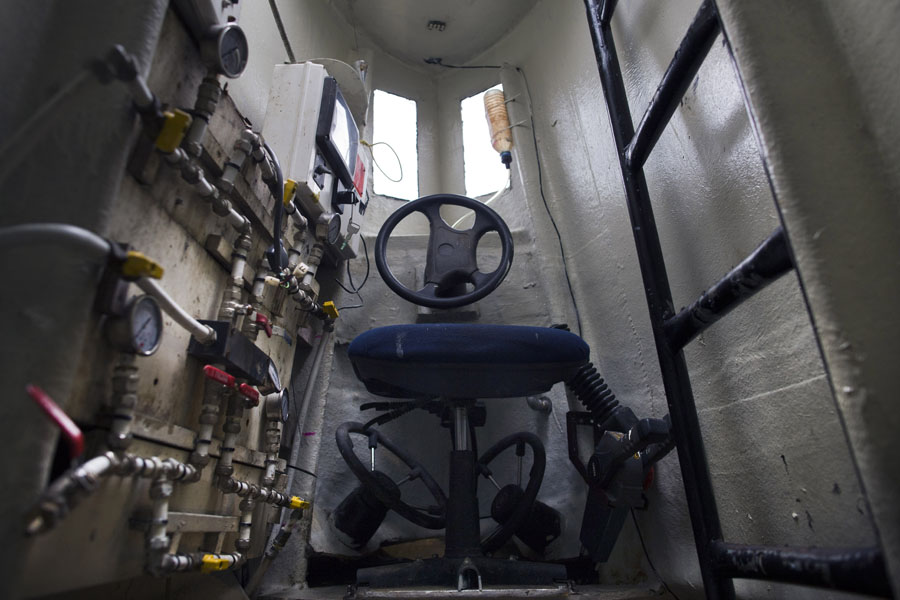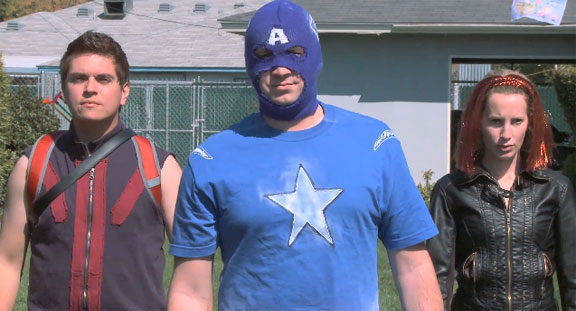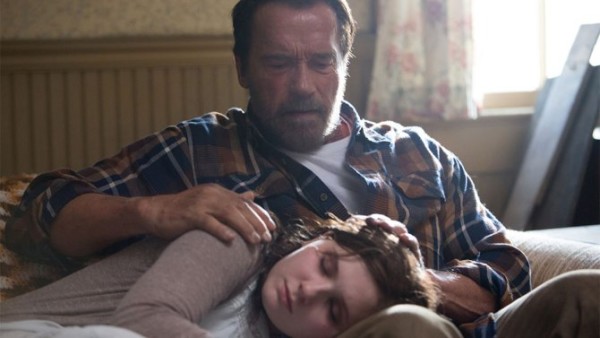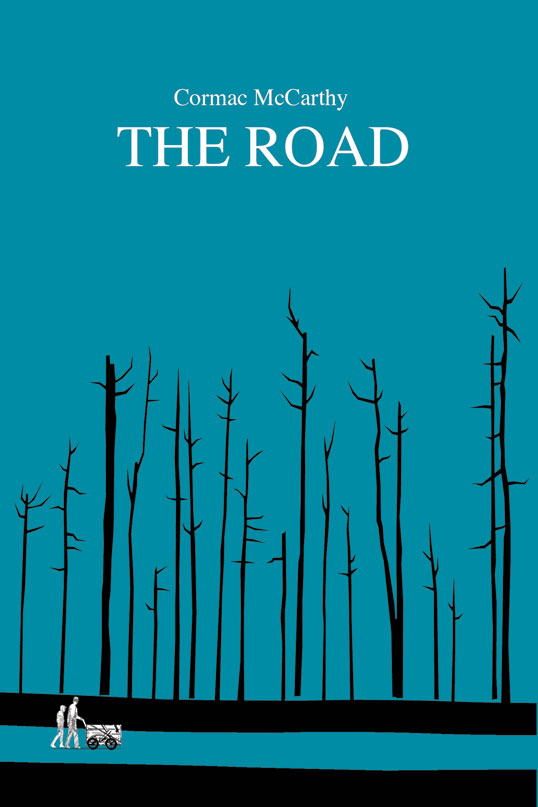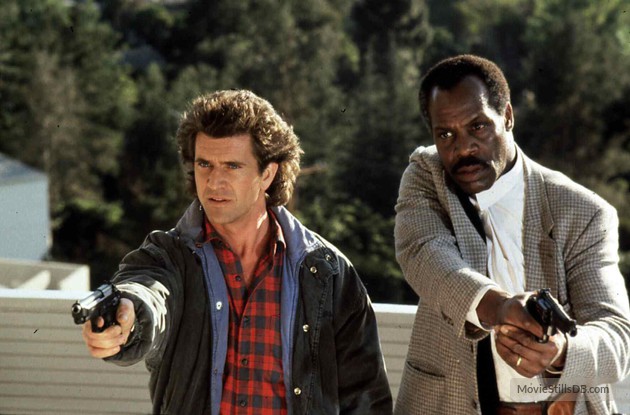Genre: Thriller
Premise: After being kicked out of the Navy, a cocaine addict is forced to pilot a narco sub to the U.S. carrying one ton of cocaine.
About: This is the third sale from Dominic Morgan and Matt Harvey, who are starting to make a name for themselves in the action/thriller genre. Their scripts The Bridge and The Controller are both being made into films (by Simon West and James McTeigue respectively). Hyperbaric has landed Tomorrow Never Dies helmer, Roger Spottiswoode.
Writers: Dominic Morgan and Matt Harvey
Details: 94 pages
You may not have seen many submarine movies lately. But that’s about to change. Studios are all developing their individual sub flicks for their once-every-five-years foray into the genre (or should I say SUB-genre – heh heh).
So why, with submarine films not being nearly as popular as they used to be, are studios still betting on them? Because they’re cheap! You only have to build one set. Also, unlike a lot of “single location” films, submarines aren’t stationary, which opens up many more story possibilities than, say, a group of people stuck in a bomb shelter.
And as long as we’re talking about submarine movies, I’m going to give you a free submarine idea to write yourself, since I’m never going to write it. You ready?
So a couple of years ago, the U.S. located two nuclear-armed Chinese subs hanging out a few miles off the East Coast. All you need to do is create a modern day “Cuban Missile Crisis” out of the situation. The U.S. spots some Chinese subs hiding off its shore. They send one of their subs to take them down. They hit one, but the other escapes. Tempers flare between the nations and in the meantime, you now have an angry rogue Chinese sub with nuclear capabilities off our coast.
Boom, count the billions. Just give me an associate producer credit.
Conall McGinty is an addict of the highest order. The guy will drink cooling fluid to get a buzz, and I’m not even sure that has alcohol in it. Conall’s biggest weakness though, is coke, and that’s what’s gotten him into his latest predicament.
Conall owes a gang of Mexicans thousands of dollars after snorting more cocaine than he sold. They were set to kill him until they found out he used to pilot subs in the Navy. This makes him a hot commodity on the homemade sub circuit – you know, those crazy motherfuckers who build their own subs to smuggle drugs into the U.S.
So a crazy beast of a man named Gamboa buys McGinty from the Mexcians in hopes that he can pilot 1 TON of cocaine (yes, you read that right, TON) to America. The two are joined by the sub’s creator, an OCD mad scientist type named Ethan Bellhaus.
When Ethan explains to Conall that his sub is made out of fiberglass, Conall nearly falls down laughing. That’ll barely get them 30 feet below sea level, a good 30 feet higher than they need to be to pull this off. Conall says that if they try to go any lower than that, the sub will collapse in on itself, but Ethan insists the sub can take it.
As they head to their destination, they’re bombarded with a series of obstacles: They’re chased by the coast guard, a 19 year old pregnant stowaway has snuck onto the ship, and at one point, the sub takes on so much water that it begins sinking. It’ll take every bit of skill Conall has to pull this off, which isn’t much, since we find out that Conall never even made it out of sub school.
I can’t stress this enough. If you want to sell a spec screenplay, this is the perfect way to go about it. Start with a marketable genre (Thriller), a marketable premise (submarine on the run), keep the action sparse and easy to read (Most action paragraphs here are 1-2 lines), have a low character count so it’s easy for the reader to remember who’s who without having to take notes (this is so important), and finally, make the concept cheap. Like I said at the outset, this is essentially a one location movie.
The nice thing about checking these boxes is that readers will be a lot less judgmental when reading your screenplay. One of the first things a reader asks himself after reading the premise is, “Would my boss want to turn this into a movie?” If the answer is “Yes,” they’re going to read your script with a favorable eye. When they see a lame choice, they’ll say, “That’s an easy fix.”
However, if your premise is boring or, worse, bad, readers are practically hunting for problems. The sooner they can discard your script, the sooner they can start skimming. Checking those boxes is kind of like having a magic shield over your script.
So I’m not surprised that Hyperbaric sold even though it’s far from perfect. For starters, the setup is flawed. You have this man who built this submarine, and yet they need someone else to pilot it? If you can build a submarine, don’t you have a fairly good idea of how to pilot it yourself?
I was willing to let this go but then there’s this entire day where Conall is chained up in the engine room while the sub floats along. If that doesn’t prove how little he’s needed, I don’t know what does.
The script also lacked urgency. There wasn’t a ticking time bomb on WHEN they needed to get to the U.S. by. Let me give you a script-related example of why that’s a big deal. One of the scenes in Hyperbaric had the engines dying. So Conall and Ethan had to go back to the engine room and fix them.
The scene plays like drying paint because there’s no reason for them to finish quickly. They can finish in 2 hours. They can finish in 2 days. It didn’t affect their mission either way. You can’t have that in a movie, especially in a thriller. You have to feel tension in every single scene. I recently heard a saying, “Your characters shouldn’t be able to sit down in the second act,” and it’s so true. If characters can “sit down” or hang out without anywhere they have to be, there’s a good chance there’s something wrong with the underlying structure of your screenplay.
But it wasn’t all bad. Morgan and Harvey did some interesting things with Conall, making him a coke-addict stuck on a tiny submarine with 1 ton of cocaine he can’t touch. That was a crafty choice.
And the script had some exciting sequences as well, such as the coast guard battle. I’m going to give you another tip here that ALWAYS WORKS in a movie. It doesn’t have a name so I’ll just call it the SET NUMBER TRICK.
What you do is you set a number that the heroes absolutely positively cannot go beyond. And then later in the script, you write a scene where they have no choice but to GO BEYOND that number. So here, Conall makes it clear that if this sub goes down to 50 feet below water, they’ll be crushed. However, when the coast guard starts dropping water grenades on them, their only chance for survival is to dive to 100 FEET! Since all of us know that that’s TWICE AS DEEP as this vessel is capable of diving, we feel an intense amount of fear for our characters when they perform the dive.
Hyperbaric is a perfectly conceived spec screenplay. I just wish its execution was a little more consistent. For those of you just starting out wanting to see how a saleable spec reads, though, you’ll want to find this one for sure.
[ ] what the hell did I just read?
[ ] wasn’t for me
[x] worth the read
[ ] impressive
[ ] genius
What I learned: Conveying distance is something a lot of writers ignore, which can kill the tension during an important moment. Say, for example, that you have one character spying an another character in a bookstore. If you don’t tell us how close the spyer is, we’re forced to guess, and we might guess wrong. Whereas you imagined your character to be just several feet away, we might think they’re all the way on the other side of the room, creating a much less exciting scene. So make sure to always convey this information. In Hyperbaric, there’s a scene where our sub is approached by the Coast Guard. And for a moment, I didn’t know if the Coast Guard was 30 feet away or 1 mile away. But then the writers say that our characters can “see the faces” of the Coast Guard. That immediately oriented me to how close (and therefore how dangerous) the Coast Guard boat was.
Scriptshadow 250 Contest Deadline – 80 days left!
Genre: TV Pilot – Drama
Premise: A group of Appalachian rednecks declare war on the local government when they’re told they must leave their mountain.
About: WGN continues their slow move into scripted television. They’ve been happy with Salem and Manhattan (liked the Salem pilot, Manhattan, not so much) and now want to add another player to that list, with Titans getting a 13-episode order. Titans comes from Rescue Me’s Peter Tolan and Paul Giamatti, as well as playwright Peter Mattei, who wrote this first episode.
Writer: Peter Mattei
Details: 70 pages (6-3-14 draft)
One of the nice things I’ve noticed about television’s reinvention is the 13-episode order. As you know, networks have always ordered 22 shows, which is an insane amount of television to write in such a short period of time when you think about it. This is why old-time television was so boring. You had to have a procedural or recurring format (cops, detectives, medical, law) in order to keep the episodes easy to write (it’s easy to have a new murder every week, a new emergency, a new court case).
10 and 13 episode orders are way more serial friendly. Since you don’t have to come up with so much product, you can move away from the pre-formatted dynamic and start telling more long-form stories. This is why TV has gotten so good. It’s basically become a bunch of long movies.
Today’s show is no different. It’s about Appalachian rednecks. Would you have been able to make that show in 2002? No way. Every network exec with a beamer would have said, “Where’s the show past episode 5?” And the thing is, there may not BE an episode past 5 but at least these same execs now know that it’s possible with all these past successes. I mean when you think about how long Breaking Bad ran without a single set-structure episode, it’s kind of amazing.
So does Titans have that kind of longevity?
Not sure how many redneck clans you know but these Appalachian gypsies run a different kind of operation than you and me. While we might, say, go to a movie with our dads, fathers and sons in the Kentucky Mountains like to beat each others’ brains in for entertainment. And that’s how we meet Big and Lil Foster, members of an extended backwoods clan known as the Farrel’s.
The group is both infamous and above-the-law in these parts (we get to know them doing a Walmart run where the workers watch them steal a thousand dollars worth of items, their mouths agape like they’ve just seen Justin Bieber) but their dominance is coming to an end.
The state of Kentucky sees dollar signs under the mountain they’re squatting on in the form of coal. The Farrel Clan has faced threats like this before. But this one is official. It’s coming straight from the government.
The Farrels turn to their group elder, 75 year-old wheezing wheelchairing cancer sufferer Lady Ray Farrell. Lady Ray is not one to claim that violence solves all, but this appears to be a declaration of war, and so, she announces, that’s what they must prepare for.
Speaking of Lady Ray, it’s no secret her time on earth is as limited as toothpaste in a redneck supermarket. So a mix of power-hungry hillbillies are squaring up to take her place. Big Foster is the leading contender, but he’s no favorite of Lady Ray and getting her endorsement seems to be the key to winning the election.
Instead, it’s Asa Farrel, a dark horse, who has the inside track. The only Farrel to have gotten an education, it was just a week ago that Asa tried to kill himself. But having seen the light, he’s back with something the Farrel clan has never had on its side before – knowledge. Big Foster is quick to sense Asa as a threat and puts him on his shit list. The question is, how far will Big Foster go to become the new leader? For a community that basically prides itself on being inbred, I’m sure the answer is: far enough.
Titans is a pilot with a lot of potential that’s about as messy as the redneck clan it follows. With that said, it’s so different from everything else out there that you can’t look away.
The script’s strong-point is the set-up of an impending redneck-versus-our-necks war. You sense that these gypsies will do anything to keep this mountain, and that’s the kind of suspense that’ll keep an audience coming back week after week.
Strangely, as soon as that war is mentioned, which is around the midpoint of the pilot, the script switches gears to a set of new storylines and gets totally lost in the process. It gives us a scene where the Farrel’s rob a random old man in town, followed by the beginning of a Farrel moonshine business followed by a kid killing his father after getting drunk on said moonshine.
On the one hand, it makes sense to start setting up story threads for future episodes. But it seems weird that we’d set up this giant war in the first half of the script only to move on to more mundane stuff in the second half. Every script should build to its finale, whether is be a feature or a TV episode, with the biggest event coming at the end. We needed the announcement of war to come at the episode’s conclusion. Sure, we get a murder, but since it’s born out of a moonshine storyline that only commenced 10 pages ago, it felt tacked on and anti-climactic.
Another frustrating thing about this episode is that there are all these hints that things are going to turn supernatural, yet they never do! Half the time I’m waiting for the group to turn into werewolves (wolves are a big thing on their mountain) and the other half for someone to perform a magic spell. In the very end of the episode (spoiler) we see the ground rumbling above a grave. Does this mean we’re now going to get a zombie show???
I think you owe it to the audience to tell them what your show is about in the pilot. I don’t see how it works if you keep your main hook a secret. At the very least, have the ending shot tell us, and let that be the cliffhanger. A rumbling ground isn’t enough. Audiences don’t have the patience these days to be dicked around. They have too many options.
It’s also interesting to note that we’re seeing yet ANOTHER sitting king who must choose his/her successor storyline. We saw this with Game of Thrones, Empire, Badlands, Tyrant, and now Titans. Some of you may be wondering WHY everybody’s picking this storyline. Are they all just copycats who can’t come up with their own ideas?
The answer is CONFLICT. This concept sets up a group of people fighting for the crown, and when you have that, you have conflict, deception, betrayal, and DRAMA built into the premise. You always want to come up with an idea that does the work for you. If you set up a story where a bunch people are all fighting for the same thing, the story is going to write itself. If you set up a story where a group of people are all trying to be better people, you’ll have to work a lot harder to find the drama since it isn’t naturally there. That’s why this setup is so popular.
Titans is a little like the moonshine its characters produce. It’s not the most pleasant way to drink, but in the end, it still gets you drunk. There’s a messiness here, for sure. But the subject matter is so unique, I can’t help but see the potential in the show.
[ ] what the hell did I just read?
[ ] wasn’t for me
[x] worth the read
[ ] impressive
[ ] genius
What I learned: Titans only did this for a page, but it was enough to frustrate me. The end of your script should be the FASTEST PART OF THE SCRIPT TO READ. Everything’s coming together so our eyes should be racing down the page. I don’t understand, then, why writers write some of their thickest paragraphs in the final 10 pages (4 and 5 line paragraphs when the rest of their script is 2-3 line paragraphs). Minimalize your action lines in the final act. If there’s a lot that needs to be explained, rethink the act until there isn’t a lot to be explained. And if you absolutely need a lot of words to tell the reader what’s going on, break your paragraphs up into smaller pieces.
Scriptshadow 250 Contest Deadline – 81 days left!
It’s a strange Monday in the movie business as we’re looking at one of the PRIME weekend slots of the calendar year, the second weekend in May, having no big flashy releases. This is usually where you’ll see a 250 million dollar titan shake its fists and wiggle its belly as it prepares to gobble up your hard-earned dollars, yet there was nary a big-budget flick to be found as every studio was terrified of Captain Iron Man Hulk’s second weekend.
Those same suits are kicking themselves now as the king of all franchises isn’t doing nearly as well as Mickey would’ve hoped. This could’ve been a prime opportunity to not just take over a vacant weekend, but steal some paper from the biggest studio in town. While Avengers touts a lot of big numbers in its press releases, the reality is, the film’s box office is down 30 million from the last entry’s second weekend. In a world where franchise sequels regularly make more than their opening counterparts, the most underrated box office nose dive of the decade is leaving some to wonder the impossible: Are super hero movies in trouble?
That sounds absurd, and let’s keep in mind that Avengers 2 is making more globally than the last film did (due to ever-expanding markets, but still), but I’ve gotten some strange e-mails this past week stating that Avengers 2’s lackluster domestic performance is the beginning of the end for the oversaturated super hero market. The film had EVERYTHING – literally EVERYTHING – that a moviegoer could want. And yet 45 million dollars worth of people (counting the smaller box office take in the film’s first weekend) have disappeared from the theaters.
From what I’m hearing, the reason for this is superhero-itis. Avengers is the culmination of every super hero movie that came before it. It is the biggest most expensive piece of digital celluloid money can buy. Yet its trailer doesn’t show anybody anything they haven’t seen before. In fact, it looks an awfully lot like the first film. No thanks, says today’s youth, I’d rather spend that money on a video game.
While I’m not ready to announce the death of the superhero film just yet, I do think studios will have to reevaluate the genre. It doesn’t matter how much people love superheroes. If every superhero movie is just a slight variation of the last one, Avengers is the beginning of the end. But if they find new exciting ways into the genre, it’ll have legs. That’s why I’m curious to see how the exceptionally unique Ant-Man does. And an even bigger crisis will occur when Marvel has to reboot all its superheroes after the end of Avengers 3 and 4. Will audiences get on board for all new films that aren’t new at all? Ask Sony and Spider-Man about that.
That’s not the only story this weekend as Warner Brothers put forth the first film in another hot trend, the female-led big-budget comedy. Hot Pursuit sees Hollywood capitalizing on the female comic craze, but if the film is any indicator of what’s to come, this pursuit could end up behind bars. Pursuit barely made 13 million this weekend. I thought the film looked fun and I like both Reese Witherspoon and Sofia Vergara, but the average ticket buyer doesn’t agree with me. Granted, neither of the two are major comedy stars, which had something to do with the less-than-stellar b.o., but the film scored terrible reviews as well (7% on Rotten Tomatoes!) and bad word of mouth can kill any comedy that doesn’t star Will Ferrell.
We’ll have to see if this is a blip on the radar or a real issue when the next female-dominated comedy comes out later this summer, the Paul Feig – Melissa McCarthy collaboration, “Spy.” I’m not going to lie. The movie looks horrible. Massively over-produced and maybe one level up from Paul Blart. Watching the trailers has given me flashbacks to Big Momma’s House. But McCarthy is lovable and on the comedy circuit, lovable actors/actresses are often more important than the quality of the film (see McCarthy’s last offering, the absolutely awful Tammy, which still managed to make 85 million dollars).
Again, the studios are all in on this thing. We have an all-female Ghostbusters film coming. A female version of 21 Jump Street. The Judd Apatow-Amy Schumer collaboration, Trainwreck, and whatever else McCarthy attaches herself too. So people are going to be looking closely at how “Spy” does. If it does badly, expect everyone to freak out and reevaluate the comedy genre, a genre that’s already in trouble due to comedies not fitting into the studios’ new global game plan.
Speaking of female-led movies, I checked out the black comedy, Welcome to Me, this weekend, starring Kristin Wiig. For those who don’t know this, Kristin Wiig is in my top 5 female celebrity crushes. I know that won’t make sense for some but there’s something just… I don’t know, sexy about her. There’s an honesty and rawness there, so I really wanted to like this film. Unfortunately it just… it didn’t work.
Black comedies are a strange beast. They’re the genre most likely to get a new writer noticed, and that’s because they’re the easiest genre to demonstrate a unique voice in. But when you try and turn them into films, the results are less-than-stellar. From The Beaver to Better Living Through Chemistry to Take This Waltz (yeah it was reviewed well but nobody watched that movie), the track record is rarely positive and that’s because the tone required to get these movies right is razor thin. Make it a little too goofy or a little too serious and the whole thing crumbles apart like a stale cupcake, which is why producers hate these scripts unless a proven director (like Spike Jonez) is attached.
Welcome to Me follows Kristin Wiig, who plays a mentally unstable loner who wins the lottery and uses the money to fund her own talk show, which is all about… herself. Comedies about mental illness are particularly tricky to navigate with how sensitive to mental illness the public is these days. With fewer people laughing about the subject matter, it eliminates any opportunity for Welcome To Me to have fun with its premise. And if you can’t have fun with a premise about a woman who buys her way into a talk show about herself, then is there any reason to even write the movie anymore? Comedy is hard enough as it is. If you’re dancing around your premise to placate the P.C. police the whole time, you probably want to move onto a premise less restrictive. After watching this, I’m not sure I’d ever get excited over a mental illness comedy. The genre simply has too many landmines that come with it.
Speaking of illness, the last big release of the weekend was the zombie flick, Maggie. For those who’ve been reading the site for awhile, you’ll remember that Maggie was a huge spec script sale from four years back. The project took all four of those years to finally get to the big (and small) screen, coming together when Arnold Schwarzenegger agreed to play the father in the film.
I still think Maggie is a great example of finding a way to sneak a drama through the system. Too many writers try writing straight-forward dramas where some 28 year old good-lucking white guy is trying to make ends meet after his middle class parents cut him off. Boo-hoo. Writer John Scott wrapped his drama inside a marketable genre (zombies), and redefined the genre in the process – creating new rules for the zombie’s incubation period (it takes months, not minutes). If you’re a dramatic writer, this is how you get your script noticed. Hide your heartfelt storyline inside a genre that sells.
Unfortunately, when you redefine a genre, you risk alienating fans of that genre, and unlike the zombies themselves, that was always the fear with Maggie. Would people come see a zombie film where zombies weren’t chasing the protagonists? Even the ultra-somber Walking Dead has the occasional blood-curdling zombie attack.
It’s a classic screenplay conundrum. The very thing that makes your idea unique is the thing that handicaps it. But that’s the movie game. You have to gamble a little in order to have a shot at breaking through. Unless you want to compete with the other 5 million people who are all writing the same thing, that is.
“Maggie” endured the purist movie test there is in my household. I only had time for one movie and I needed to make a choice. It came down to it or Welcome to Me. In the end, Maggie looked too depressing. And after a long week, I wanted to enjoy myself. So I went with “Welcome.” That movie ended up depressing me in a different way, but there was no going back. I’d made my choice.
That’s something you want to be thinking about as a writer. You’re creating a product. And someone, somewhere, is going to be sitting in their house watching a trailer for that product, trying to decide if they should pay for it. Are you giving them a product that they’ll be excited about? As complicated as people like to make screenwriting and filmmaking, that’s what it comes down to. If you can be honest with yourself and come up with something that you genuinely believe people will say “Yes” to when asked that question, then you probably have yourself a screenplay. So go write it!
Scriptshadow 250 Contest Deadline – 82 days left!
Hey guys. No Amateur Offerings this weekend. However, use the comments to suggest/vote for a second chance review – a script from one of the previous Amateur Offerings that you felt deserved a shot at a review. You can nominate your own scripts, of course, but it will ultimately be up to the majority. In the meantime, I will give Scriptshadow brownie points to whoever comes up with the best logline that includes a kitten.
Scriptshadow 250 Contest Deadline – 84 days left!
One of the least talked about components of screenwriting is READABILITY – or “How easy is your screenplay to read?” That’s because when compared to character, dialogue, structure, and theme, readability doesn’t seem that important. And that’s true to a certain extent. But think of it this way. While eggs and flour and sugar are all essential to make a great cake, you can’t serve the cake unless you have a plate to carry it on. “Readability” is a screenplay’s plate.
This is one that’s always vexed me. I’ll be sludging through a screenplay where every sentence feels like I’m on the 405 freeway during rush hour. Start-stop-start-stop-start-stop. Then, when I read a good screenplay, the sentences run together like melted butter. Everything seems so natural. So easy. I never think about the writing once.
But it’s not always clear why some scripts read uglier than others. I’ll go back through the bad-reads to figure out what went wrong and find that “technically” the writing was “correct.” What clouds the analysis is story quality. When you’re in the middle of a good story, the sentences always read quicker. When you’re reading a bad story, each sentence seems to go on forever.
Is readability just relative? Are sentences only as bad or good as the story they’re a part of?
I don’t think so. There’s clearly a way to combine sentences together in a pleasing easy-to-read manner. Unfortunately, there don’t seem to be any books or online tutorials about how to achieve this. You’re taught all the rules of writing in school and from then on it’s up to you to “write good.”
That’s why I’m writing today’s article. If nobody else is going to do it, I might as well give it a shot. To do so, I’ll be comparing four sentences/paragraphs from professional and amateur screenplays. My hope is, by utilizing this direct comparison technique, we’ll find some answers. Let’s give it a shot.
Example Number 1
From – “Joy” by Annie Mumolo
“They both glance over to a table where Joy’s father RUDY sits like a KING with his arm around a ROBUST woman in an ill- fitting MARILYN MONROE DRESS.”
From – Amateur Screenplay
“Danny patters to the front doors. Angelina awaits him there. The two join hands, partaking in a private moment.”
At first glance, the amateur submission isn’t that bad. But I don’t think it’s as good as the professional one. I found Joy to be EXTREMELY readable. While I wouldn’t nominate it for “most technically proficient screenplay of the year,” I don’t remember a single moment where I had to reread a sentence to understand what was going on.
That’s one of my biggest takeaways from this experiment. Professionals know they’re not trying to win over English professors with their scripts. They’re trying to tell a story. And the easier they can get that story across to the reader – whether it’s technically correct or not – the better.
A lot of times, amateurs overthink their prose and make it more complicated than it needs to be. If you look at the sentence from “Joy,” it’s not trying to be more than it is. There isn’t a single word in the sentence that you don’t understand. But reading the amateur sentence, we get the word “patters” immediately. That’s not a common word in this context and causes a pause, if however slight. Whenever a reader stops, if even for a split-second, that means you’ve failed as a writer. Reading is supposed to be seamless. When it isn’t, the reader is taken out of the story.
There are two other issues with the amateur example. The word “partaking” is another odd unpleasant word in this context, which causes another pause. Also, notice how the paragraph is broken up into very abrupt sentences, making for a robotic presentation. I wouldn’t say that this is unpleasant. We’ll see in a moment that it’s possible to do this well. But in conjunction with the other mistakes, it hurts the read.
That’s another thing I’ve learned through this experiment. Bad writing is a lot like bad piloting. If you make one mistake as a pilot, it usually goes unnoticed. But when the mistakes pile up, that’s when the plane crashes. Let’s move on to the next example.
Example Number 2
From – “February” by Osgood Perkins
“Kat comes out from behind the closet door, wearing her oversized hooded Bramford sweatshirt and a pair of printed pajama pants.”
From – Amateur Screenplay
“Cinnamon unbuttons shirt cuffs, rolls up sleeves, pulls on thin black leather gloves from a rear hip pocket. He draws the backside .22 and holds it aloft by the silencer.”
Here we have a lot of detail. But in one case, the sentence is easy to read through, and in the other, it made my head hurt. Notice how in “February,” we have three words in a row that end with the letter “d” and then nearly four words in a row that start with “p.” This alliteration helps the sentence move along quicker in the mind.
With the amateur entry, it feels like information overload. I remember reading this script and there were a lot of sentences, like this one, where I had to read them 2-3 times to take in everything that was going on. While technically fine, it seems like the paragraph could’ve been simplified. Also note that while in “February,” we have a full sentence, in the amateur submission, words are missing in favor of the staccato style. I’ve added where those words would be:
“Cinnamon unbuttons [her] shirt cuffs, rolls up [her] sleeves, [then] pulls on [some] thin black leather gloves from…”
I’m not going to say to never use staccato style. This is something a lot of writers have used successfully. But when you use in it conjunction with too much information or overwritten sentences, it can easily start to feel like work to read through. Case in point, here’s a paragraph from who many feel to be the king of this kind of writing, Shane Black, in his first screenplay, “Lethal Weapon.”
“Sergeant Martin Riggs is driving. He looks like he hasn’t slept. He certainly hasn’t shaved. The DISPATCH RADIO SQUAWKS. He turns down the MUSIC from the car radio and hears:”
We have short quick sentences here, like the amateur example. But they’re all grammatically correct, making them easier to read. Let’s move on to the next example, staying with our friend, Shane.
Example Number 3
From – “Lethal Weapon” by Shane Black
“A section of the parking lot is cordoned off by yellow streamers which read: POLICE LINE – DO NOT CROSS, and as we watch, a black and white patrol car pulls up, admitting two beat COPS and a young hooker. Her name is DIXIE, and she is not happy.”
From – Amateur Screenplay
“Hadley settles in. The Maitre d’ snaps at a server, pointing to the table and holding up one finger addressing Hadley who has just joined the group.”
At first glance, Shane Black’s sentence seems odd. While he probably should’ve ended his first sentence after “DO NOT CROSS,” he chooses to make it one continuous sentence. Some may say this is “wrong,” yet it all feels so relaxed and natural, I’m tempted to say it’s fine. I don’t have to put in any effort to figure out what he means or reread anything, which tells me the sentence is a success.
Now let’s look at the amateur example. Everything seems to be going well until we reach the Maitre d’ holding up one finger. When we get to “and” in this example, “holding up one finger” seems to be more of an afterthought, as opposed to a natural extension of the sentence. This is fine in everyday conversation when we remember things at the last second all the time, but when you’re describing something in a screenplay, it has to feel planned, or else it reads like you’re making your story up as you go along.
This assumption is solidified when the last part of the sentence arrives: “…addressing Hadley who has just joined the group.” This tacked on piece of information is lazy. Notice how everything in Shane’s example is in the ACTIVE VOICE. What’s happening is happening RIGHT NOW. In contrast, “…who has just joined the group” is PASSIVE. It already happened, making it feel tacked on. The lesson here is clear. Keep everything in the active voice if possible. And don’t tack things onto the ends of sentences. It shouldn’t be, “Carson writes an article after he opens a coke.” It’s, “Carson pops open a coke and writes his article.”
Example Number 4
“500 Days of Summer” by Scott Neustadter & Michael H. Weber
“And that question hangs in the air. Tom, panicked, decides to cut the silence. All the pent up uncertainty and confusion, coupled with the challenge to his manhood in front of the woman he loves, all manifests in one single, solid, almost automatic RIGHT CROSS TO THE GOOD LOOKING DOUCHEBAG’S FACE.”
From – Amateur Screenplay
“Joseph drives too fast through woody shrubs on a steep, gravelly hillside. He slams on the brakes before heading off a bluff. Gets out and looks across the vast desert sands.”
Our 500 Days friends go big here with a really long sentence. They even make a mistake. “All” is used twice when it should’ve been used once. And yet it works. The long sentence is fine because it’s a pivotal moment in the film. It’s okay to write bigger when the moment is bigger. The sentence also takes place completely in the active voice, making it easy to read. And everything flows. Every word/fragment/idea is a logical progression from the word/fragment/idea before it.
Now let’s look at the second example. Everything here is fine until we get to “before.” “Before heading” takes us out of the active voice into a semi-passive voice. But it’s the next sentence that derails the paragraph. Driving the car and getting out to look at the desert are two different actions and should’ve been split up into different paragraphs. Together, they feel jarring, causing the reader to hesitate as he realizes we’ve moved out of the car into a different area. There’s also an inconsistency to focusing on such specific moments within the paragraph (“woody shrubs, a steep gravelly hillside, slams on the breaks”) to then end on one so general (looking across a desert).
CONCLUSIONS
This exercise has taught me a few things about the elusive quality of readability. First off, “technically correct” doesn’t always mean “readable.” Just as “technically incorrect” doesn’t always mean “unreadable.” You can go against what they taught you in school and still write a very easy-to-read sentence. Look at our first example from Annie Mumolo. Some people might call that a run-on-sentence. But it’s fast and smooth and easy-to-read so it works.
Another big breakthrough for me – the closest I got to an “ah-ha” moment – was Osgood Perkins’ use of alliteration, which added a pleasing repetition to the words on the page. It’s this “pleasing” quality that I’m after. But I don’t think it’s possible to ALWAYS use alliteration. It’d just be too hard (and might even get annoying after awhile). I almost wonder if there’s a less structured/defined way to achieve the same effect using a middle-ground technique (not quite normal sentence and not all-the-way alliteration). Has anyone heard of such a technique?
One of the most frustrating things about all this is the reality that there’s nobody out there who actually teaches you how to WRITE. Sure, there are teachers who teach you nouns and verbs – all the technical stuff. But once you have that down, where is the instructor who teaches you how to place words together in a pleasing way? I haven’t found him yet. And I want to. How bout you guys? Do you know of any books or tips that help one achieve this? I’ve been looking for material on this forever.
In the meantime, here are some tips to avoid the mistakes today’s amateurs made.
1) Keep your writing simple.
2) Keep your writing in the active voice if possible.
3) Never write to impress. This is what most beginners do and they end up writing a bunch of unnecessary prose in the process.
4) Don’t use vocabulary to show off. If you’re using a thesaurus to include a word you’ve never personally used before, you probably shouldn’t use that word.
5) Staccato-style writing (“Jump down.” instead of “They jump down.”) can be draining to read over a long period of time. There are some writers who do this well. But usually, it requires the brain to think differently in order to process the words, which is taxing. Proceed with caution.
6) In screenwriting, “fewer words” is usually better than “more words.” While this would seem to contradict what I just wrote, what I mean is, even with traditional sentences, there’s always a way to say something with fewer words. “John grabs his grimy baseball hat as well as his gun while wiping the ever-thickening sweat off his brow,” can easily be turned into, “John grabs his cap and gun and flicks the sweat off his brow.”
7) Complex sentences are dangerous. Indeed, it’s after a conjunction where a few of our amateurs fell apart. A single conjunction (and, but, or) is standard. But when you start using more than one in your sentence, it may be time to start a new sentence.
8) Write to your level – If you’re only capable of doing a double-axel, you’re going to be exposed every time you try a triple-axel. Sure, we’d all like to be Cormac McCarthy, but one of the biggest mistakes I see writers make is writing above their level. And it’s VERRRRRY painful to read. Screenwriting is one of the more forgiving forms of writing when it comes to prose. You don’t have to knock our socks off. Take advantage of that.
And with that, I’m going to leave you with two final UNLABELED examples, one pro and one amateur. Tell me which you think is pro, which is amateur, and why in the comments. I’ll reveal which is which (in the comments) after sundown.
MYSTERY EXAMPLE #1
“Casper, wearing only tighty-whiteys, sits on the floor of his bedroom amid t-ball trophies, race car bed sheets and a pin-up of Farrah Fawcett; the conflicting decorations of a boy who went through a quick growth spurt.
He thumbs through last year’s yearbook looking for the mystery girl. He gives up, lays down and lights a joint.”
MYSTERY EXAMPLE #2
“Surrounded, Black begins a coughing fit. His hands come up to cover the cough – the paperclip he stole from Moreau slips into his hand.
Stumbles into the Elevator panel – hitting the EMERGENCY button. The Elevator STOPS – sending everyone flailing.
Black uses the paperclip to release the cuffs. Nickels sees what’s going down – but isn’t quick enough to stop –
– Black unloads a barrage of strikes, taking down each Agent. Quickly undoes his shackles.”


